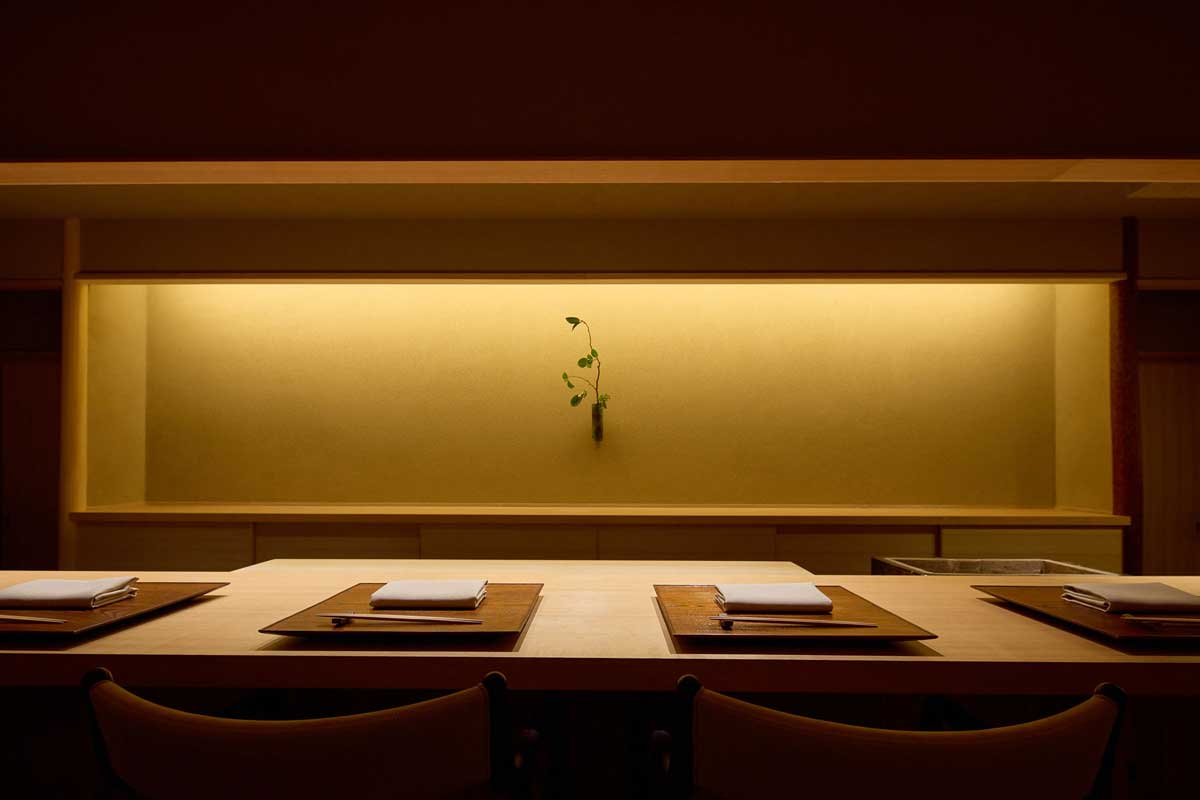Two Michelin stars were bestowed on Myojaku in the first release of the famous guidebook after this restaurant opened its doors. From the flavors and interior to the chef’s skills, personality, and polished sensibilities, it is clear why this jewel of Japanese cuisine joined the ranks of impossible-to-book Tokyo eateries in the blink of an eye.
Every element at Myojaku is formed from an aesthetic built on the concepts of harmony, subtlety, and clarity. Ultimately, cuisine should show the essence of its elements. To this end, Chef Nakamura creates his space and food from a place of profound insight, careful techniques, and supple sensibility. The restaurant’s name perfectly captures Chef Nakamura’s philosophy with its combination of the characters for ‘brightness’ and ‘tranquility’. The idea is originally from philosopher Yusuke Yamaguchi, whose concept in Japanese of akaru sabi was adopted by ceramic artist Seimei Tsuji, who interpreted it as a graceful and carefree feeling, like the clear sky at dawn. He sought a beauty exuding splendor from within his pieces of rustic simplicity.
Located one street back from the busy Roppongi-dori thoroughfare in a quiet residential street of Nishi-Azabu, Myojaku was designed by architect Tetsu Kijima, and the minimalist, elegant space with its exquisite Japanese cuisine has captured the attention of connoisseurs almost overnight. The restaurant’s signboard contains the austere Japanese characters of calligraphy artist Mikiko Kayama. The chef cooks for his guests seated at the counter or in one of the two small private rooms, and an additional small counter will someday be used as a bar. An eight-meter single spruce plank takes center stage in a setting that makes you feel among nature, with motifs of timber and earthen walls and restrained Japanese-style flower arrangements by Fuan in Minami-Aoyama.
Japanese materials and craftsmanship are all around, from the chef’s stunning ginkgo wood chopping board to the lacquered wooden trays by Yoshitake Kihira found at each guest’s setting. The fine, elongated chopsticks tapered at both ends are called Rikyubashi, named for the famous 16th-century tea ceremony master who would shave the tips for his guests just before service. Chef Nakamura jests that he consulted Rikyu when deciding to use the slightly longer than typical 27-cm chopsticks, feeling they fit this space. The tableware collection contains the works of modern artists and is sourced through Ginza’s Pond Gallery. The chef has been using the gallery’s pieces for his presentation since long before Myojaku opened, so he knew them well and steadily built up the collection with pieces that caught his eye.

